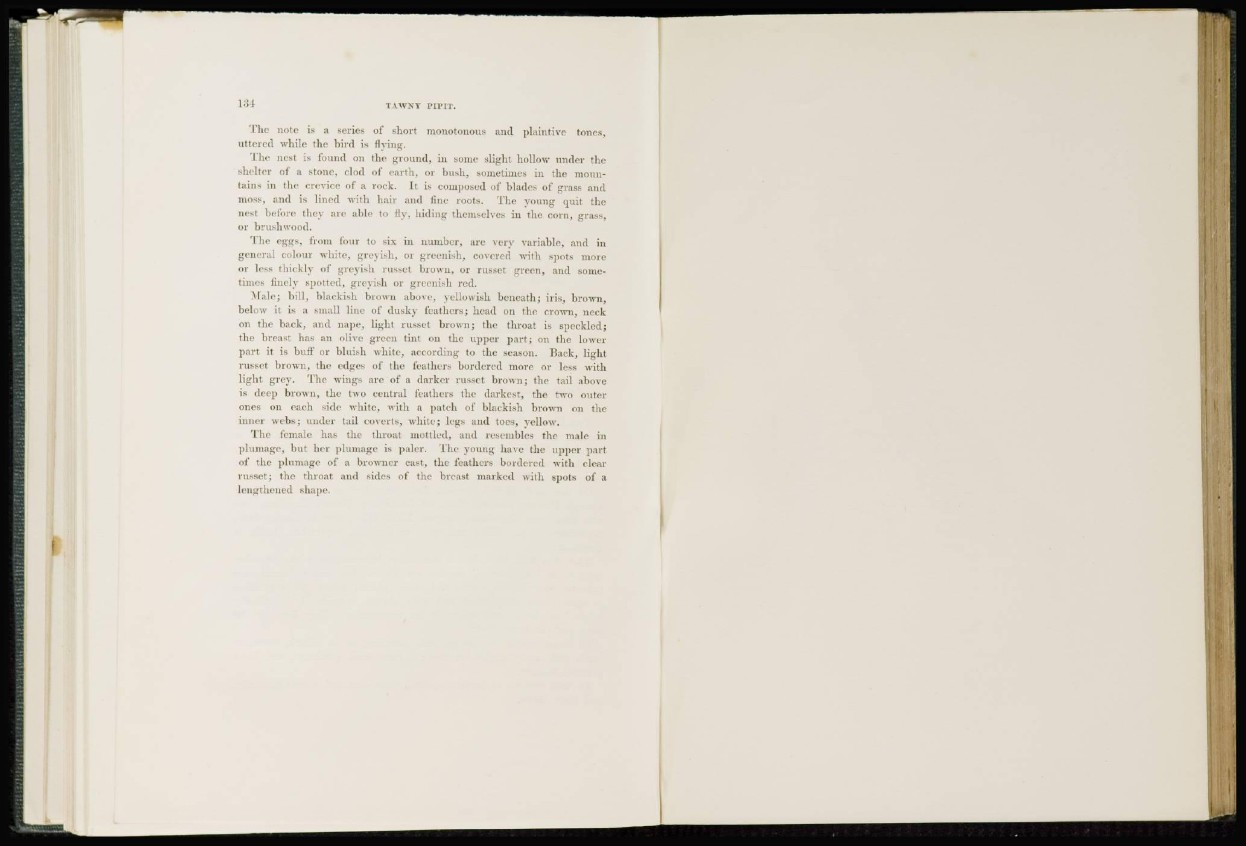
The nolo is a series of snort monotonous and plaintive tones,
uttered while the bird is flying.
The nest is found on the ground, in some slight hollow under the
shelter of a stone, clod of earth, or hush, sometimes in the mountains
in the crevice of a rock. It is composed of blades of grass and
moss, and is lined with hair and fine roots. The young quit the
nest before they are able to fly, hiding themselves in the corn, grass,
or brushwood.
The eggs, from four to six in number, are very variable, and in
general colour white, greyish, oi greenish, covered with spots more
or less thickly of greyish russet brown, or russet green, and sometimes
finely spotted, greyish or greenish red.
Male; bill, blackish brown above, yellowish beneath; iris, brown,
below it is a small line of dusky feathers; head on the crown, neck
on the hack, and nape, light russet brown; the throat is speckled;
the breast has an olive green tint on the upper part; on the lower
part it is burl' or bluish white, according to the season. Back, light
russet brown, the edges of the feathers bordered more or less with
light grey. The wings are of a darker russet brown; the tail above
is deep brown, the two central feathers the darkest, the two outer
ones on each side white, with a patch of blackish brown on the
inner webs; under tail coverts, white; legs and toes, yellow.
The female has the throat mottled, and resembles the male in
plumage, but her plumage is paler. The young ha; e the upper part
of the plumage of a browner cast, the feathers bordered with clear
russet; the throat and sides of the breast marked with spots of a
lengthened shape.